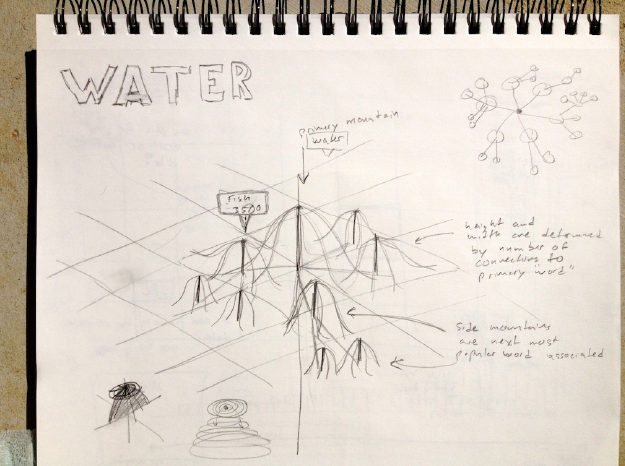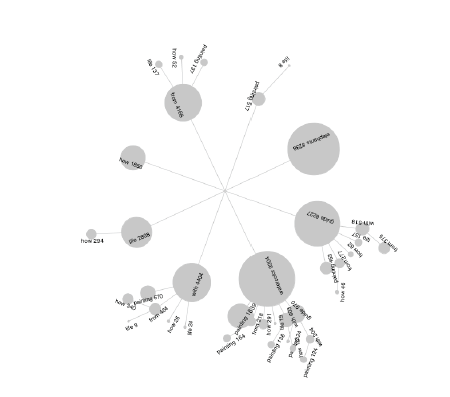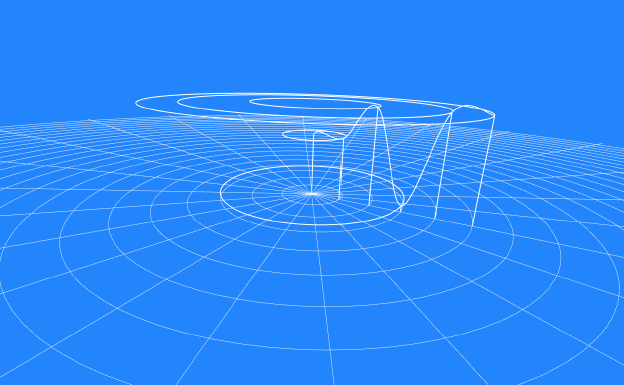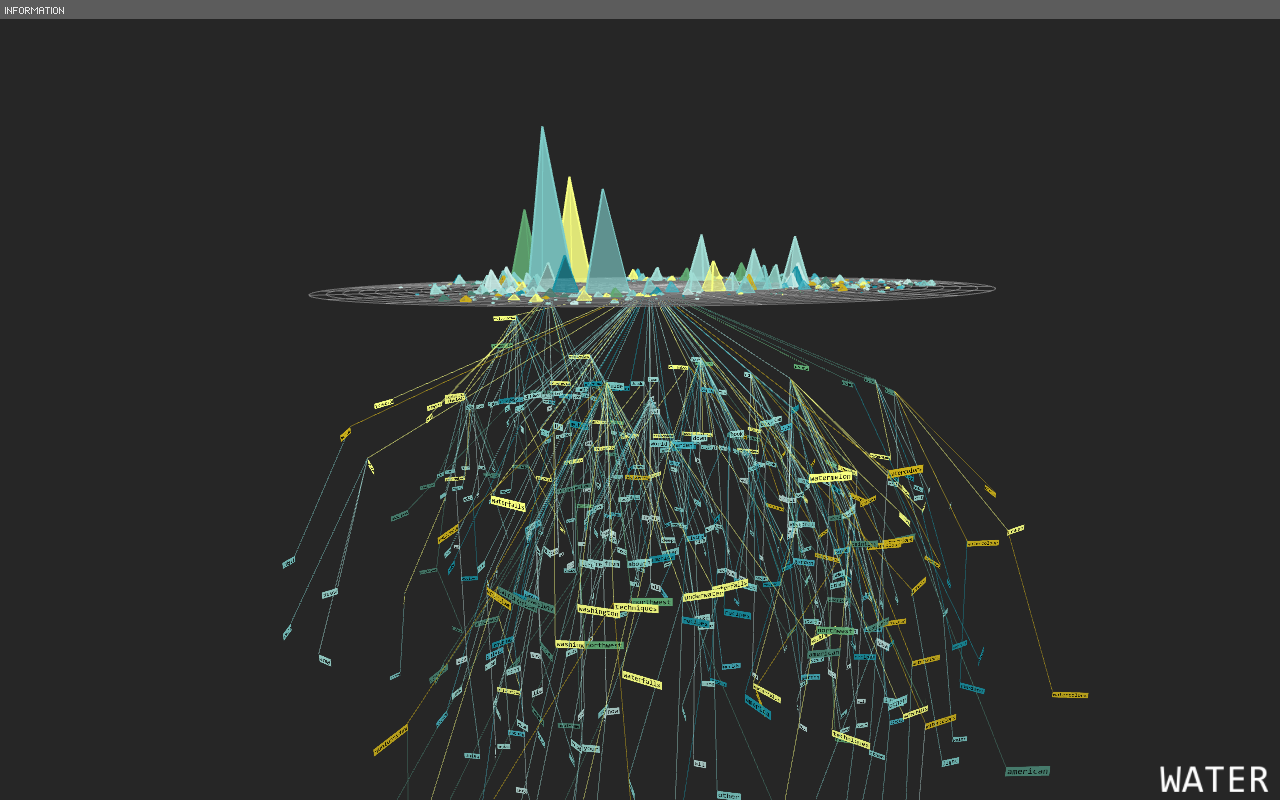Final Project: Water
MAT 259, 2012
RJ Duran
Introduction
The goal of this project is to visually explore and navigate the connections between words associated with the word "WATER" in book titles from the Seattle Public Library database from 2006 to 2011. By utilizing a partial FP-Tree algorithm to parse incoming book titles I am able to represent visual patterns in associated words. The data is represented as tree structures and volumetric pyramids in a polar plane within a navigable 3D space.
Background
and Sketches

After I made the initial sketch I started prototyping the idea with Processing to see if I could
represent it as I imagined. I ran a simple FP-Tree test to look at the data in 2D as seen below.

This led me to rethink the type of graph I wanted to place the data in relation to in 3D space. I
built a simple polar graph to determine if this was a realistic direction. The images below show
my first attempts at plotting a few data points within the space in relation to the polar graph.

Once I was able to plot some lines within the space I decided to experiment with placing random
pyramids on the graph. This was to help me determine what the actual data might look like
when plotted. The pyramids in the images below are placed at random locations from the center
of the graph. They have random heights within a set range.

Query
select title from inraw where title like '%water%' and itemtype like '%bk%';
Explanation
This query examines the entire database "inraw" for book titles containing the word "water."
In Sequel Pro the query takes about 3 or 4 mins to complete. After testing a small query where I looked at a specific day I expanded the search to the entire database. I used a custom Processing program to run the query and save the data into a text file for easy loading into my main visualization. The entire set of data can be seen in http://rjduran.net/MAT/259/final/20052011Data_WATER.txt.
Process
The project started out as an extension of project #2, where I tried to determine how "green"
Seattle Readers are. As I examined the broad topic of sustainability and environment I focused
on one common topic for this project. By building a MySQL query for book titles containing the
word "water" I was able to gather a rich set of data to represent.
The process continued with a sketch of the initial idea. Initially I imagined representing the data
as a topographical map with mountains representing the occurrence of words.
For a more detailed project description see
this PDF.
Result and
Analysis
Overall this project really pushed my designing abilities, which were very minimal at the beginning. I explored methods for coloring data and representing layers of meaning within a 3D space through an interesting data set.
It also pushed my data filtering, searching, and sorting abilities to look for interesting ways of representing the data. From the data I was able to highlight the connections between water and the occurrence of each word. This string of terms shows the number of times a word happened to appear in a title.
novel:13018 watercolor:9204 elephants:8238 guide:7197 with:5729 from:5460 painting:4064 life:3162 underwater:3148 how:3104 your:2800 techniques:2714 color:2580 book:2437 watermelon:2416 watercolour:2412 watercolors:2366 sea:2328 mystery:2326 black:2302 gardens:2300 you:2267 fish:2198 garden:2118 world:2083 out:2061 like:2041 blue:1978 american:1969 deep:1966 about:1948 complete:1885 northwest:1763 most:1753 blackwater:1735 food:1733 washington:1652 story:1618 light:1615 west:1577 waterfalls:1569 america:1559 living:1507 worlds:1485 army:1473 more:1442 other:1441 all:1434 down:1428 recipes:1418 paint:1407
What this tells us is the most common word used with water is a title is "novel" followed by "watercolor." This probably indicates that people were checking out mostly guide books, stories about things that have to do with water and watercolor art books. Water for Elephants was also a very popular book among readers.

Code
I used the PeasyCam and ControlP5 libraries in Processing. I also used
this method in order to render a lot of text in 3D without slowing the framerate.
Run in Browser
Source Code
Control
Press 1-9 for display modes
0: Reset
1: Overview
2: Expanded view
3: FP Tree 1
4. Pyramid view
5: FP-Tree 2
6: Pyramids
7: Side view
8: Random view
9: Toggle rotation
Control Parameters
G: Hide/Show Grid
L: Hide/Show Lines
P: Hide/Show Pyramids
V: Toggle Variance
Parameters
Master Rotation
Node Spacing
Root Distance
Branch Spread
Rotation Speed



